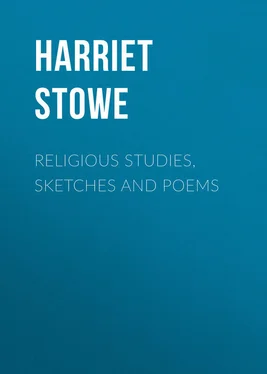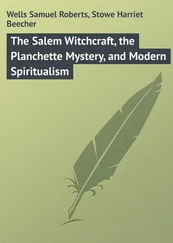Harriet Stowe - Religious Studies, Sketches and Poems
Здесь есть возможность читать онлайн «Harriet Stowe - Religious Studies, Sketches and Poems» — ознакомительный отрывок электронной книги совершенно бесплатно, а после прочтения отрывка купить полную версию. В некоторых случаях можно слушать аудио, скачать через торрент в формате fb2 и присутствует краткое содержание. Жанр: foreign_prose, на английском языке. Описание произведения, (предисловие) а так же отзывы посетителей доступны на портале библиотеки ЛибКат.
- Название:Religious Studies, Sketches and Poems
- Автор:
- Жанр:
- Год:неизвестен
- ISBN:нет данных
- Рейтинг книги:5 / 5. Голосов: 1
-
Избранное:Добавить в избранное
- Отзывы:
-
Ваша оценка:
- 100
- 1
- 2
- 3
- 4
- 5
Religious Studies, Sketches and Poems: краткое содержание, описание и аннотация
Предлагаем к чтению аннотацию, описание, краткое содержание или предисловие (зависит от того, что написал сам автор книги «Religious Studies, Sketches and Poems»). Если вы не нашли необходимую информацию о книге — напишите в комментариях, мы постараемся отыскать её.
Religious Studies, Sketches and Poems — читать онлайн ознакомительный отрывок
Ниже представлен текст книги, разбитый по страницам. Система сохранения места последней прочитанной страницы, позволяет с удобством читать онлайн бесплатно книгу «Religious Studies, Sketches and Poems», без необходимости каждый раз заново искать на чём Вы остановились. Поставьте закладку, и сможете в любой момент перейти на страницу, на которой закончили чтение.
Интервал:
Закладка:
There was one woman of all women to whom it was given to know him perfectly, entirely, intimately – to whom his nature was knit in the closest possible union and identity. He was bone of her bone and flesh of her flesh – his life grew out of her immortal nature. We are led to see in our Lord a peculiarity as to the manner of his birth which made him more purely sympathetic with his mother than any other son of woman. He had no mortal father. All that was human in him was her nature; it was the union of the divine nature with the nature of a pure woman. Hence there was in Jesus more of the pure feminine element than in any other man. It was the feminine element exalted and taken in union with divinity. Robertson has a very interesting sermon on this point, showing how the existence of this feminine element in the character of Jesus supplies all that want in the human heart to which it has been said the worship of the Virgin Mother was adapted. Christ, through his intimate relationship with this one highly favored among women, had the knowledge of all that the heart of man or woman can seek for its needs.
There is in the sacred narrative a reticence in regard to the mother of Jesus which would seem to bear very significantly upon any theories of their mutual relations, and especially upon their present connection in spiritual matters – the idea that Mary, as Mother of God, retains in heaven authority over her son, and that he can deny her nothing. St. John takes care to state specifically the scene in Cana of Galilee where Jesus informs his mother that, in his divine relations and duties, her motherly relation has no place. "Woman, what have I to do with thee? mine hour is not yet come."
The address, though not in the connection wanting in respect, or so abrupt as it appears in the translation, was still very decided, and was undoubtedly one of those declarations meant not only for her but for mankind. In the same spirit are his words where, in his public ministration, word was brought to him that his mother and his brethren stood without, desiring to see him: —
"Who is my mother, and who are my brethren? And he looked around on them that sat about him, and said, Behold my mother and my brethren. For whosoever shall do the will of God, the same is my brother and sister and mother."
From that noble utterance, the Song of Mary, – retained by the church as a Magnificat, – there is evidence of a soul not only exalted by genius and enthusiasm, but steeped in the traditions of ancient prophecy. It is so like the Psalms of David that a verse of it, if read out casually, might seem to be taken from them. There is no doubt that a soul like this, when possessed of the great secret of prophecy, devoted itself with ardor to all in the Hebrew Scriptures which foreshadowed her son's career. She was the first teacher of the child Jesus in the Law and the Prophets. One of Raphael's most beautiful conceptions of her represents her sitting thoughtfully, holding the hand of the infant Jesus, while the roll of the prophecies lies in her lap, and her eyes are fixed on the distance as in deep thought. There is a similar picture of her by Palma Vecchio. The communings of Christ and his mother on these subjects must have been so long and so intimate that she more calmly and clearly knew exactly whither his life was tending than did his disciples. She had been forewarned in Daniel of the time when the Messiah was to be cut off, but not for himself; she understood, doubtless, the deep, hidden meaning of the Psalm that describes the last agonies, the utter abandonment of her son.
There is in her whole character a singular poise and calmness. When the Angel of the Annunciation appeared to her she was not overcome by the presence of a spiritual being as Daniel was, who records that "he fell on his face and there was no strength in him." Mary, in calm and firm simplicity, looks the angel in the face, and ponders what the wonderful announcement may mean. When she finds that it really does mean that she, a poor lonely maiden, is the chosen woman of all the human race – the gainer of the crown of which every Jewish woman had dreamed for ages – she is still calm. She does not sink under the honor, she is not confused or overcome, but answers with gentle submission, "Behold the handmaid of the Lord, be it unto me according to his word."
Yet the words of the Magnificat show a keen sense of the honor and favor done her. She exults in it with an innocent heartiness of simplicity. "He hath regarded the low estate of his handmaid, for from henceforth all nations shall call me blessed."
It is remarkable that Mary was never in any one instance associated in public work with Jesus. She was not among the women who are mentioned as following and ministering unto him. She was, it seems, in Jerusalem at the last Passover of our Lord, but it was not with her, or at her table, that he prepared to eat the Passover. He did that as master in his own house, with a family of little children of his own choosing. Mary was not at the first Eucharistic feast. Undoubtedly there was foreknowledge and divine design in all this, and doubtless Jesus and Mary were so completely one in will and purpose that she was of perfect accord with him in all these arrangements. There are souls so perfectly attuned to each other, with such an exact understanding and sympathy, that personal presence no longer becomes a necessity. They are always with each other in spirit, however outwardly separated. But we find her with him once more, openly and visibly, in the hour when all others forsook him. The delicacy of woman may cause her to shrink from the bustle of public triumph, but when truth and holiness are brought to public scorn she is there to defend, to suffer, to die.
Can we conceive what this mob was, that led Jesus forth to death? Mobs in our day are brutal, but what were they then? Consider what the times must have been when scourging was an ordinary punishment for criminals, and crucifixion an ordinary mode of execution; what were the sights, the sounds, the exhibitions of brutality among which Mary and the women friends of Jesus followed him to the cross!
And Mary did not faint – did not sink. She did not fall to the earth when an angel predicted her glory; she did not fall now, when the sword had gone through her heart. It is all told in one word, "Now there stood by the cross of Jesus his mother." The last word that Jesus spoke to any mortal ear was to commend her to his dearest friend.
After the resurrection Mary appears once more among the disciples, waiting and praying for a descent of the Holy Ghost – and then in the sacred record we hear of her no more.
But enough is recorded of her to make her forever dear to all Christian hearts. That Mary is now with Jesus, that there is an intimacy and sympathy between her soul and his such as belong to no other created being, seems certain. Nor should we suffer anything to prevent that just love and veneration which will enable us to call her Blessed, and to look forward to meeting her in heaven as one of the brightest joys of that glorious world.
V
THE HOLY CHILDHOOD
In the first recorded public prayer of the Apostles after the resurrection of our Lord he is called "Thy Holy Child Jesus."
The expression is a very beautiful one if we couple it with the Master's declaration that the greatest in the kingdom of heaven is the most like a little child, and that to become as a little child is the first step toward fitness for the knowledge of spiritual things.
There has been in this world one rare flower of Paradise, – a holy childhood growing up gradually into a holy manhood, and always retaining in mature life the precious, unstained memories of perfect innocence. The family at Nazareth was evidently a secluded one. Persons of such an elevated style of thought as Joseph and Mary, conscious of so solemn a destiny and guarding with awe the treasure and hope of a world, must have been so altogether different from the ordinary peasants of Nazareth that there could have been little more than an external acquaintance between them. They were undoubtedly loving, gentle, and tender to every one, full of sympathy for trouble and of kind offices in sickness, but they carried within their hearts a treasury of thoughts, emotions, and hopes, which could not be perceived by those whose spiritual eyes had never been opened. It is quite evident from the surprise that the Nazarenes manifested when Christ delivered his first sermon among them that they had never seen anything unusual in the family, and that Christ himself had been living among them only as the carpenter's son. This case is not peculiar. The great artist or poet often grows to manhood without one of his townspeople suspecting who he is, and what world he lives in. Milton or Raphael might so have grown up unknown in a town of obscure fishermen.
Читать дальшеИнтервал:
Закладка:
Похожие книги на «Religious Studies, Sketches and Poems»
Представляем Вашему вниманию похожие книги на «Religious Studies, Sketches and Poems» списком для выбора. Мы отобрали схожую по названию и смыслу литературу в надежде предоставить читателям больше вариантов отыскать новые, интересные, ещё непрочитанные произведения.
Обсуждение, отзывы о книге «Religious Studies, Sketches and Poems» и просто собственные мнения читателей. Оставьте ваши комментарии, напишите, что Вы думаете о произведении, его смысле или главных героях. Укажите что конкретно понравилось, а что нет, и почему Вы так считаете.












